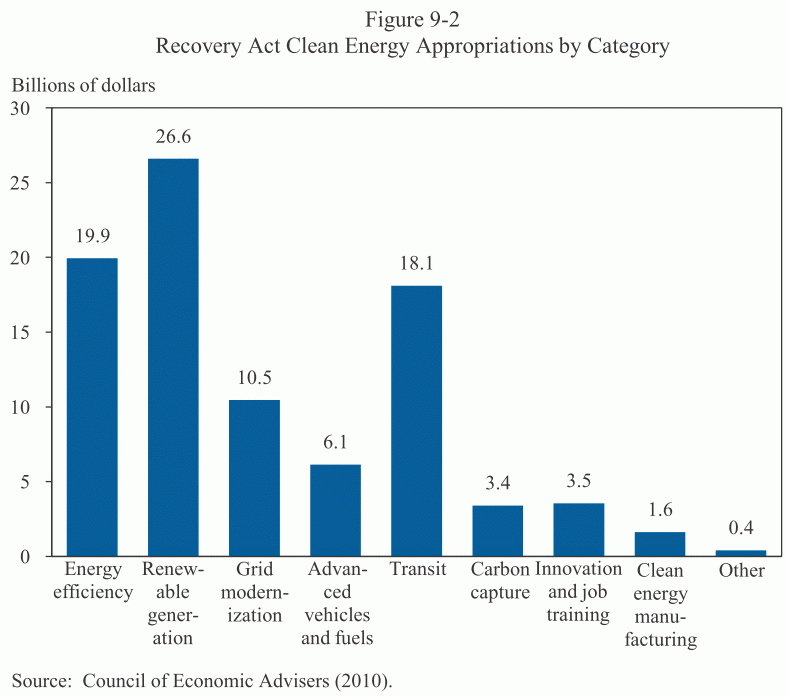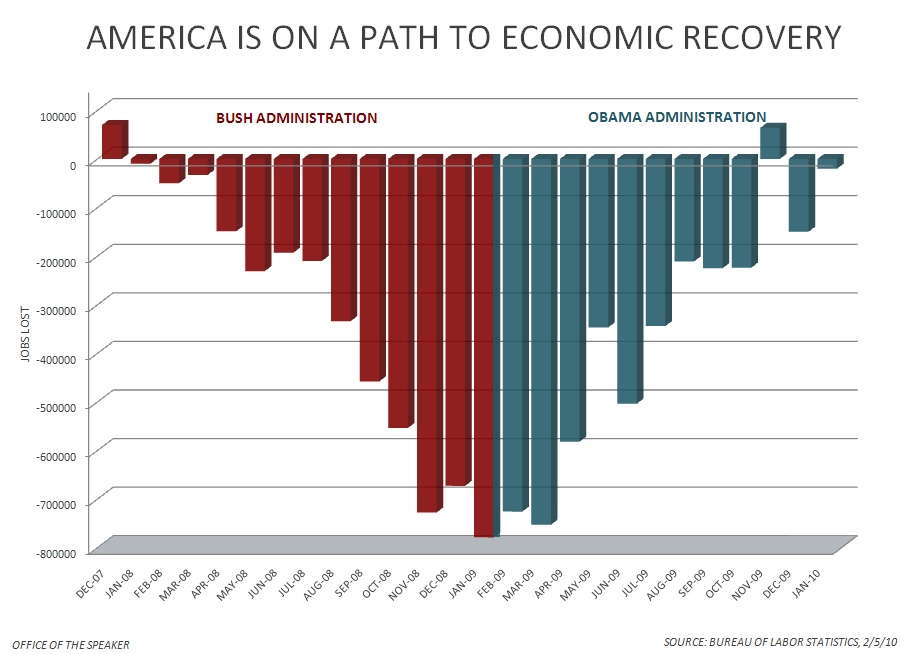The Recovery Act, a key component of America’s tectonic shift away from foreign oil, should be celebrated for what it has saved — jobs, money and energy.
By making smart investments in clean energy technology and cutting taxes for 95 percent of Americans, the Recovery Act kept America on track to double our renewable energy output. It also funded critical efficiency and weatherization projects that save families and small businesses money on their electricity bills.
Manufacturing an End to Foreign Oil
 Admiring the VoltPrior to the Recovery Act, countries like China and South Korea controlled the market for advanced battery technology that will power fuel efficient cars of tomorrow. In fact, 98 percent of the world’s advanced battery production is being done in Asian countries. The Recovery Act looked to America’s manufacturing muscle and our technology prowess to jumpstart battery production jobs here in America. Thus far, $2.4 billion in grants have been awarded to companies and educational institutions in over 20 states to fund 48 new advanced battery and electric auto projects — creating an entire new domestic industry and supercharging our market share from less than 2 percent to as much as 20 percent.
Admiring the VoltPrior to the Recovery Act, countries like China and South Korea controlled the market for advanced battery technology that will power fuel efficient cars of tomorrow. In fact, 98 percent of the world’s advanced battery production is being done in Asian countries. The Recovery Act looked to America’s manufacturing muscle and our technology prowess to jumpstart battery production jobs here in America. Thus far, $2.4 billion in grants have been awarded to companies and educational institutions in over 20 states to fund 48 new advanced battery and electric auto projects — creating an entire new domestic industry and supercharging our market share from less than 2 percent to as much as 20 percent.
An additional $300 million in grants have been awarded to 25 cost-share projects to expand the nation’s fleet of alternative fuel vehicles. This will put 9,000 alternative fuel and energy efficient vehicles on the road further reducing our reliance on foreign oil.
Renewable Energy = Renewable Savings
Beating Wall Street’s recession-based projections, the wind industry grew its capacity nearly 40 percent in 2009, blowing past expectations that existed prior to the passage of the Recovery Act. Investing in solar projects at schools and government buildings helped lower energy costs on local community budgets and taxpayers. The $10 billion efficiency investment in federal buildings alone will save taxpayers $2 billion a year – creating renewable savings based on renewable energy.
Families Warm to Savings
The impact of the Recovery Act can truly be felt at home. Improving the energy efficiency of millions of U.S. homes will save working families an average of $350 on their energy bills per year, cutting their costs by nearly one third. Thus far, the Weatherization Assistance Program has created over 8,500 jobs for local contractors, plumbers and electricians.
Smart Grid + Smart Growth = Smart Future
Building a smart energy grid will empower consumers with information and tools to control their energy bills while providing a platform for wind, solar and geothermal energy to reach more families. $3.4 billion in grants have been awarded to small businesses, utilities, manufacturers and towns to fund smart energy grid projects that will support tens of thousands of jobs and benefit consumers in 49 states.
The Recovery Act not only invests in our communities, it reshapes how we travel between them. Investing $16 billion in high speed rail and mass transit projects will not only create jobs, it will reduce the amount of oil we import and minimize traffic congestion by taking cars off the highway.

A Change in Direction
For years, America has been governed by an energy policy that invested in foreign oil and fossil fuels without looking to new technology solutions and alternatives that reduce carbon pollution.
 via the Environmental Law Institute
via the Environmental Law Institute
When the Recovery Act was passed our nation faced the worst economic crisis since the Great Depression, the nation was bleeding jobs at an alarming rate and foreign competitors were capitalizing on decades of inaction from the United States in the clean energy industry. History will remember the Recovery Act as an emergency response, but the future still has a lot riding on its success.




